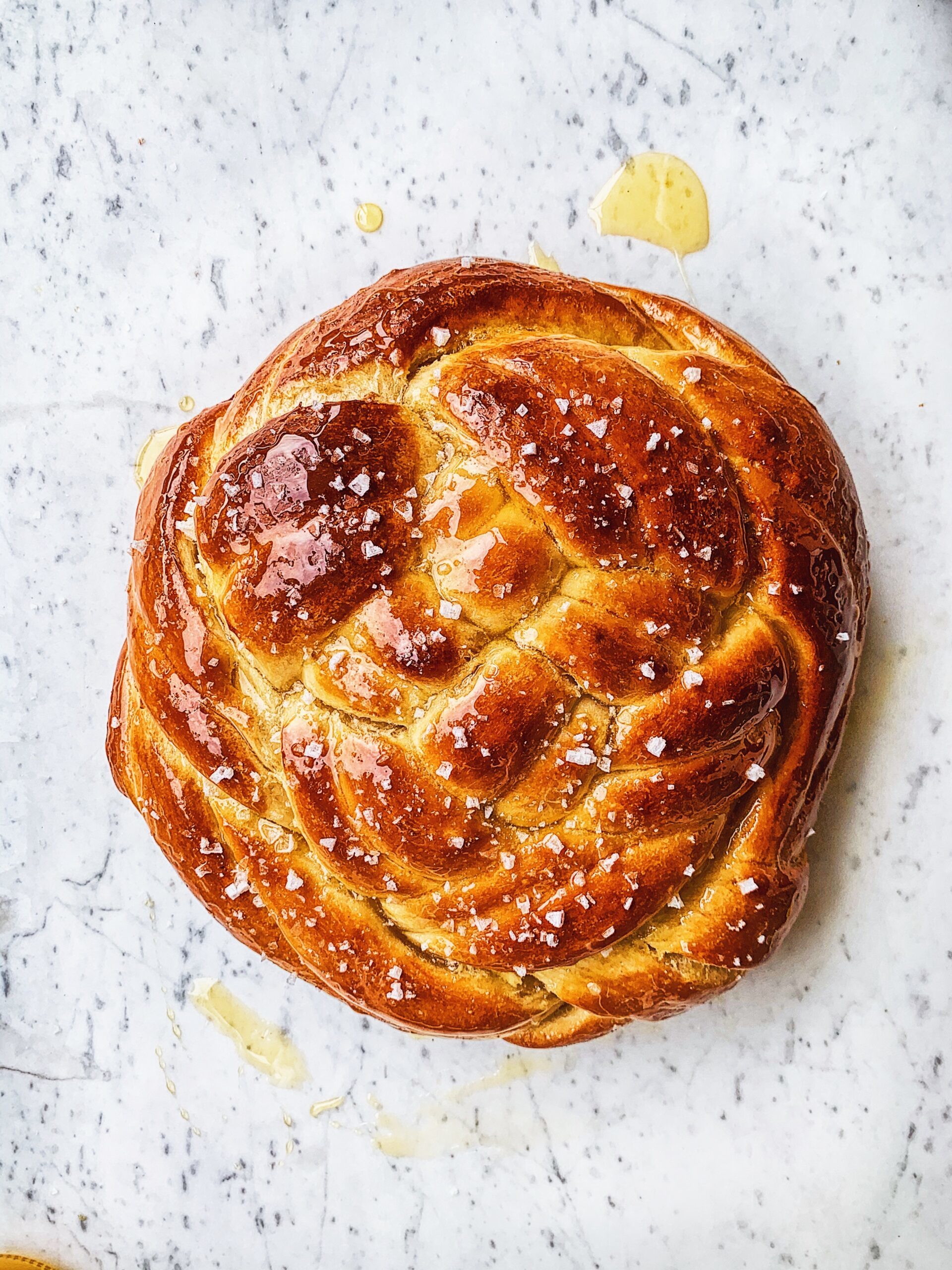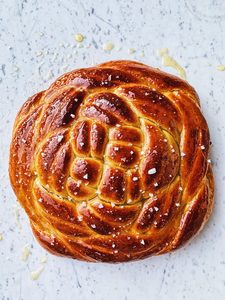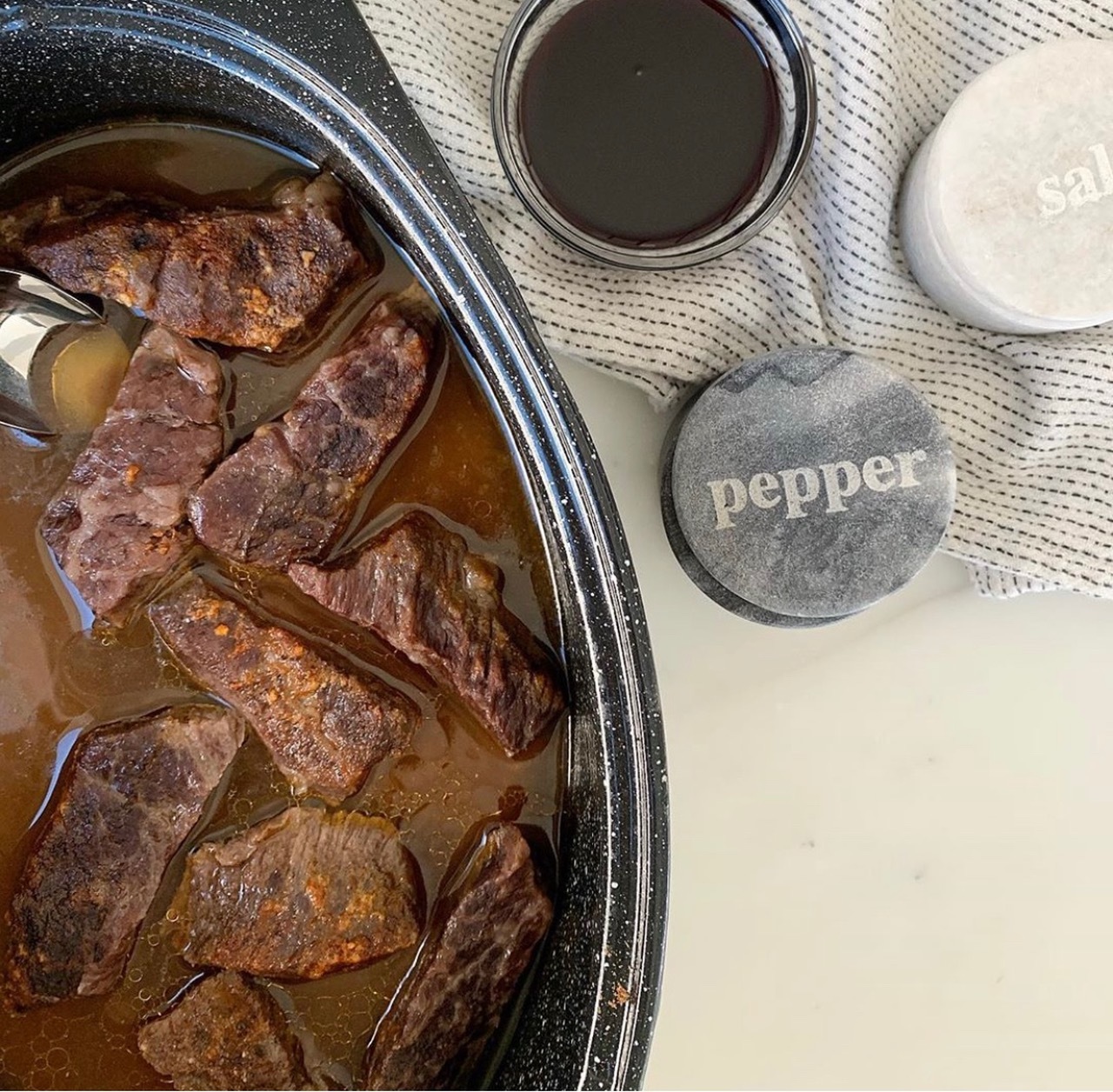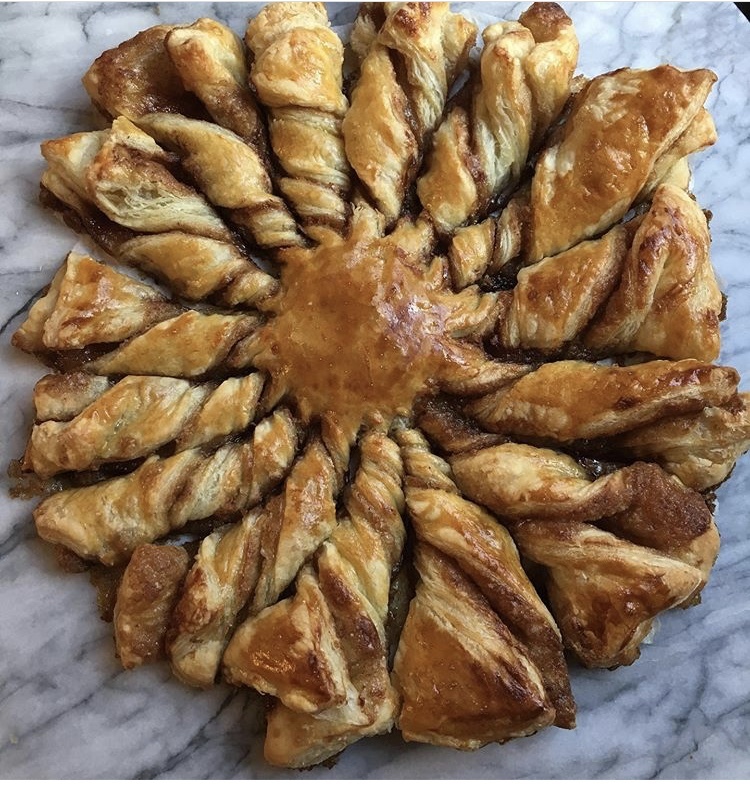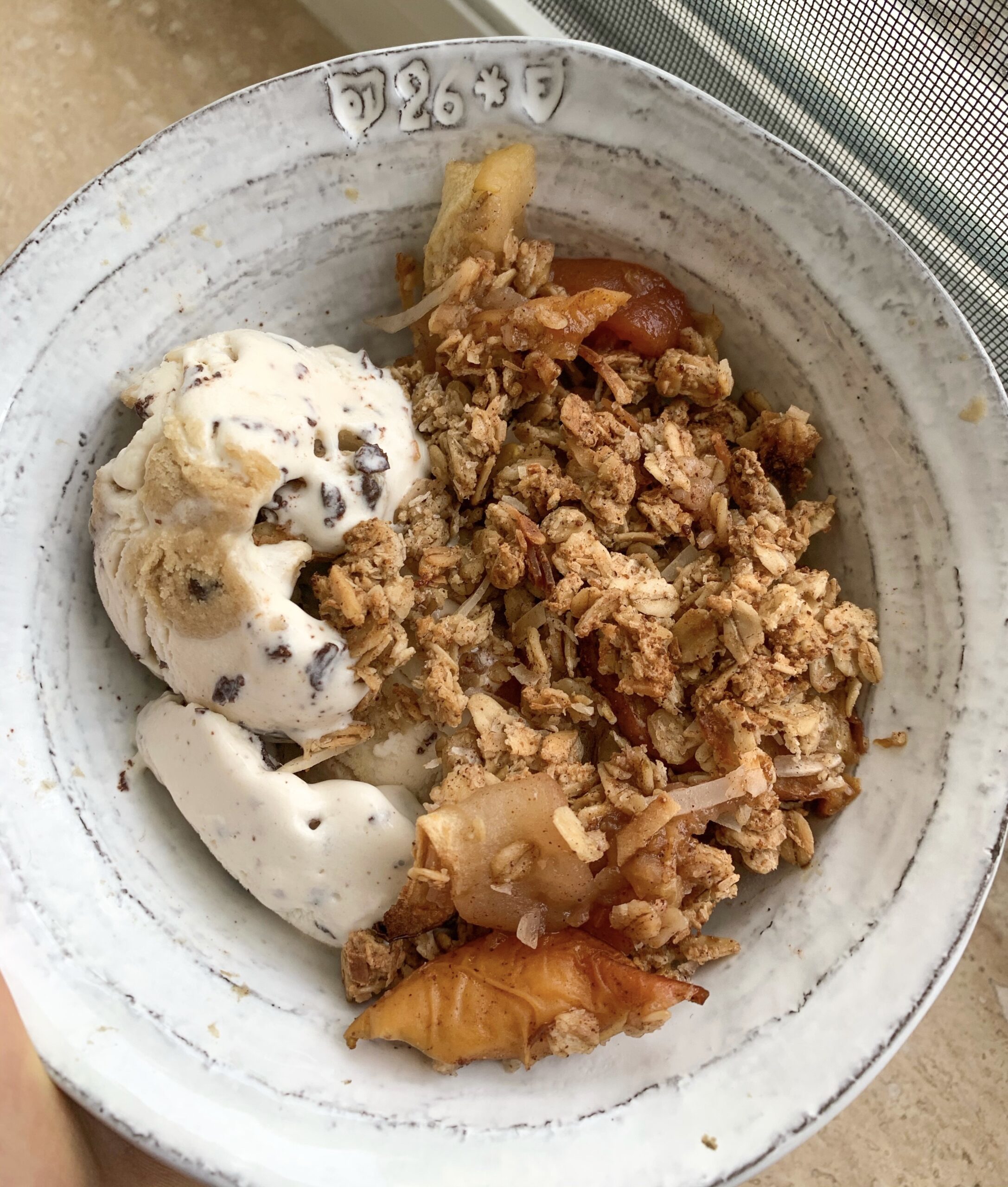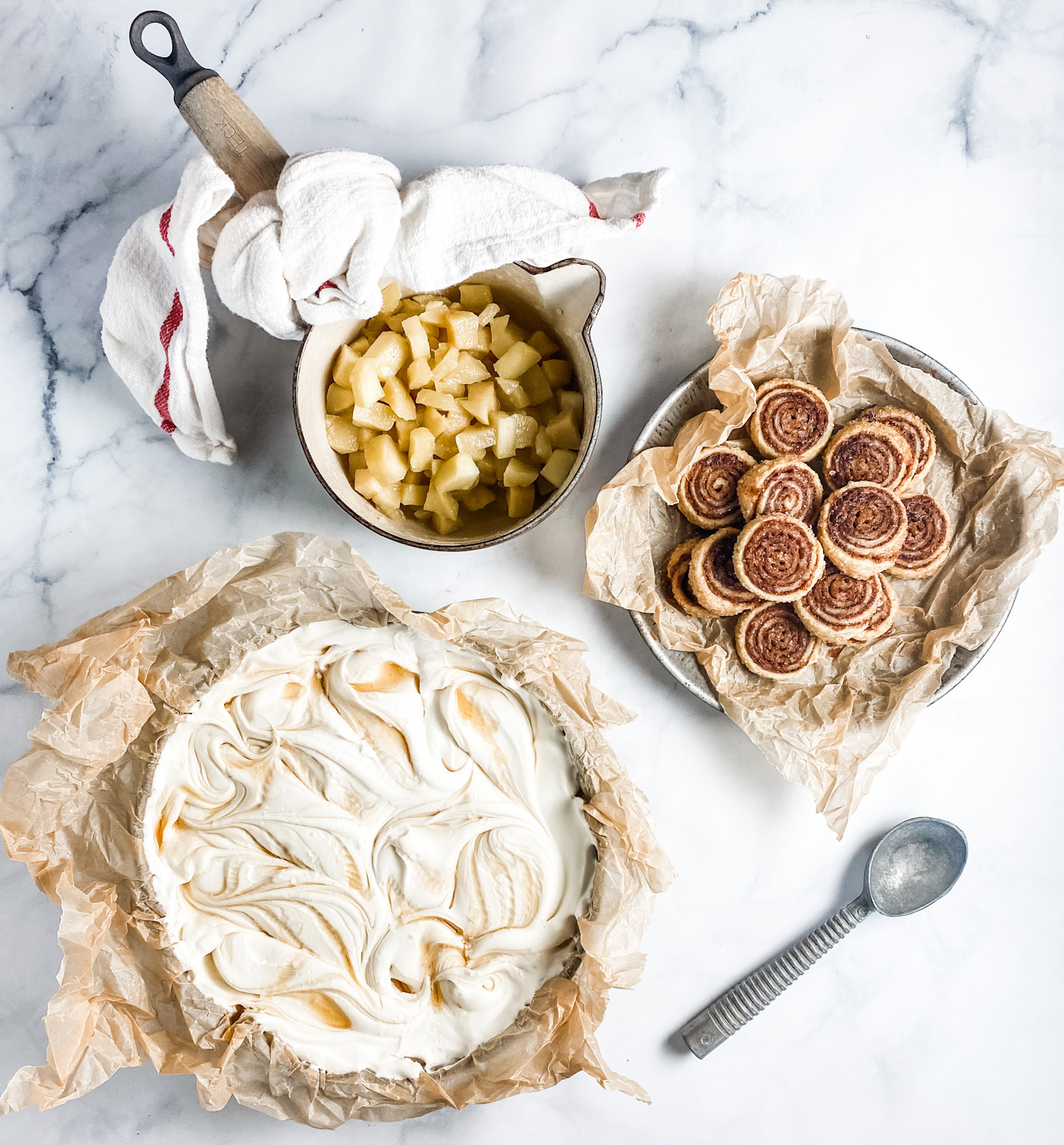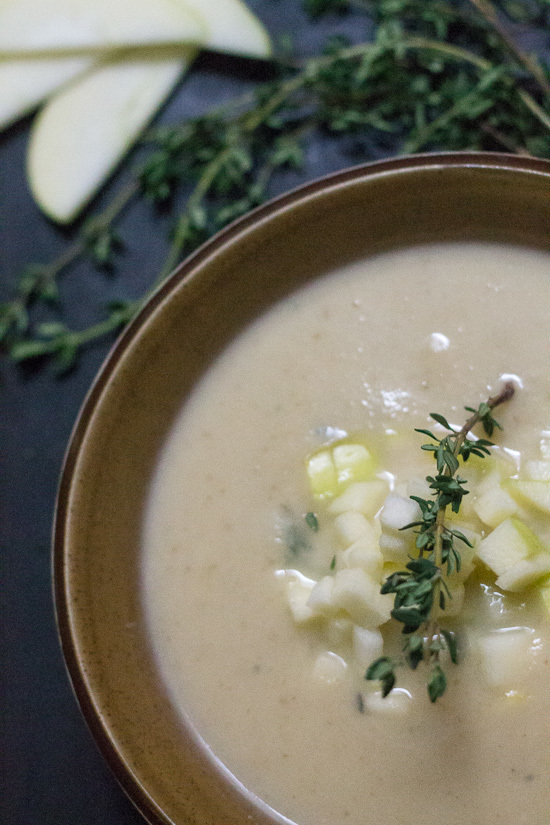A sweet and beautiful looking round braided challah, just in time for Rosh Hashanah!
Ingredients:
GRAMS
20-25 grams fresh yeast or 7 grams active dry / instant yeast
125 grams lukewarm water
100 grams honey, plus more for drizzling on top
70 grams neutral oil
such as sunflower seed oil, grape seed oil, vegetable oil, canola oil, etc.
3 eggs
2 whole eggs
1 separated egg
1 egg yolk for the dough
1 egg white for our egg wash
10 grams salt
600 grams bread or all purpose flour (or more, depending on the consistency of the honey)
flaky salt
CUPS
1 tablespoon active dry / instant yeast
1/3 cup and 4 tablespoons lukewarm water
1/3 cup honey, plus more for drizzling on top
1/3 cup and 1 tablespoon neutral oil
such as sunflower seed oil, grape seed oil, vegetable oil, canola oil, etc.
3 eggs
2 whole eggs
1 separated egg
1 egg yolk for the dough
1 egg white for our egg wash
2 teaspoons salt
4 1/2 to 4 2/3 cups bread or all purpose flour (or more, depending on the consistency of the honey)
flaky salt
Note:If you do not want to use 3 eggs for one challah loaf, substitute 1 egg with 50 grams of water (or 4 tablespoons of water). Just keep 1 whole egg and 1 egg yolk, then! Also, feel free to add more sugar if you are planning on making a sweet dessert challah with various add ons.
Directions:
STEP 1
In a bowl, mix the yeast, lukewarm water and honey together until the yeast has dissolved.
Note: If you are using dry yeast, make sure it is still active by letting it sit in the water for 5 minutes once mixed. If the mixture becomes slightly foamy, it’s active, otherwise, try another sachet of yeast.
STEP 2
Next, add the oil, 2 whole eggs and 1 egg yolk to the bowl and mix until everything is combined.
Disclaimer on the color of the dough, I used free range eggs that were very very pigmented, if your dough turns out lighter in color, it’s still fine!
STEP 3
Add the flour and salt to the liquid batter and mix until the flour has fully hydrated (until there are no visible dry spots). If your dough still feels a bit too dry and hard to knead, don’t be afraid of adding a couple more tablespoons of water to it. The hydration of the dough depends on the size of the eggs you are using and other external variables like the environment you are in and the humidity of the air. Therefore, trust your gut, add some more water if necessary (same procedure if it feels too wet, add a bit more flour) and start kneading!
You will see that the dough will start to clean the sides of the bowl while you mix it.
STEP 4
Once everything is incorporated, it’s time to knead our dough, this will encourage the gluten development in our dough which will give structure to our challah loaf.
It took me about 5-7 minutes of kneading by hand to get to the perfectly smooth dough texture.
If you are adding any other ingredients like raisins, chocolate chips or nuts, now is the time to add them to the dough and incorporate them as well. No need for them to participate in the whole kneading process, just add them once you are done kneading the dough.
STEP 5
Shape the dough into a ball and place it in a lightly greased bowl.
Cover the bowl and let the dough rest and proof for about 1 hour at 26°C (78°F) – it will take less or more time depending on the temperature of the room. The dough should feel light, airy and it should have doubled in size.
Fold in the corners and pinch them together to form a ball!
STEP 6
Once the dough is done proofing (once it has doubled in size), take it out, place it on a wooden board or directly on the table and flatten it out.
After that, divide the dough in 8 equal parts. You can eyeball the division of the dough or weigh the whole dough first, and then weigh each piece of dough to make sure they are all equal in weight.
STEP 7
Next, shape each piece of dough as shown in the photos down below, this will ensure an even, smooth, less crusty finish of the dough. Grease your hands or the surface you are working on with some more oil if necessary.
STEP 8
Roll out each individual piece of dough into a long strand, then stick two strands together, right next to each other. Basically one strand will be formed out of two thinner strands.
STEP 9
Time to braid!
You have two types of strands: one that is underneath another one and one that is on top of another strand.
Take the strand that is underneath another strand and place it on top of the strand right next to it, going counter clockwise.
Next, once you are done overlaying all the strands that were underneath, on top of their right neighbor, you are going to repeat the same step going clockwise this time and so on and so forth until you have no more strands to braid with.
When you are done, cut the excess dough off or shove it under the braided loaf.
STEP 10
Keep in mind you will want to preheat your oven at 200°C (390°F) 7-10 minutes before adding your loaf in.
Place your dough onto a flat baking tray lined with parchment paper or into a loaf tin and cover the dough with a clean towel or saran wrap.
Allow the dough to rise again for 20-30 minutes at 26°C (78°F) – again, it will take less or more time depending on the temperature of the room. Again, do not rush the process, the dough needs time to rise and become light and airy after we worked it out once again.
You will know the dough is done proofing when once you gently poke the dough with your finger, it will leave an indent and not spring back.
STEP 11
You can absolutely use a regular egg wash – a whole egg plus a tablespoon of water. I preferred to use the leftover egg white as my egg wash, as you usually use 1/4 of the egg wash you’d make anyways.
Before popping our dough into the oven you have two options:
Lightly brush the egg white on top of the challah before adding the dough into the oven if you like a deeper, darker colour. If you are topping the challah with any seeds or nuts or salt, now is the time to sprinkle it on top of the loaf, once the egg wash is on.
The egg wash tends to burn in the oven, so 10-15 minutes into the baking process you will have to pull the dough out and brush the egg was on it again (or for the first time if you did not brush it at all) – you can skip the first egg wash if you want, just pop the challah out of the oven half way through baking and brush the egg wash then, after that, return the challah to the oven.
STEP 12
Pop the challah loaf in the oven for 25-30 minutes, until golden, amber brown.
Note: Try to keep an eye on the challah loaf, once it is in the oven. You know your oven the best, so you will probably anticipate its behavior in this scenario. For example, I know my oven tends to burn the right side of the loaf, so half way through the baking process, I pull out the challah and turn it 180° so the other side will bake evenly as well.
STEP 13
Brush the challah with a good drizzle of honey, right before serving it to your guests, and a generous sprinkle flaky salt on top of it all, which will balance out the sweetness of the honey. The honey is there to add more shine and sweetness to the bread, but it will get absorbed by the dough, making the crust softer in time.
Keep the challah bread covered, at room temperature for up to 3 days. It will dry out in time, so it is best consumed freshly baked.
Carolina Gelen ia a software programmer living the life of a recipe developer who’s main goal is making kosher food more approachable, while also refining our favorite kosher dishes. Check her out on Instagram @carolinagelen

